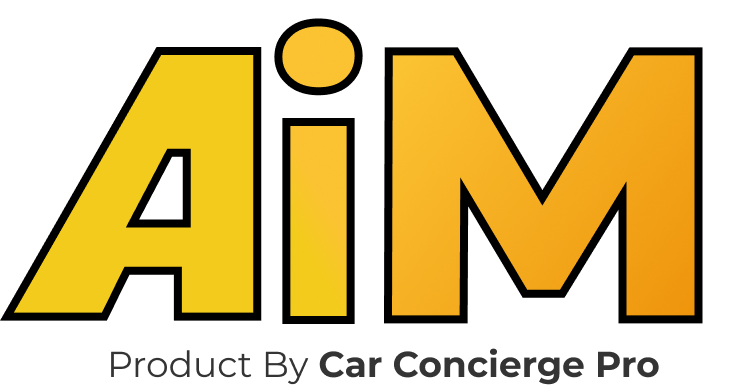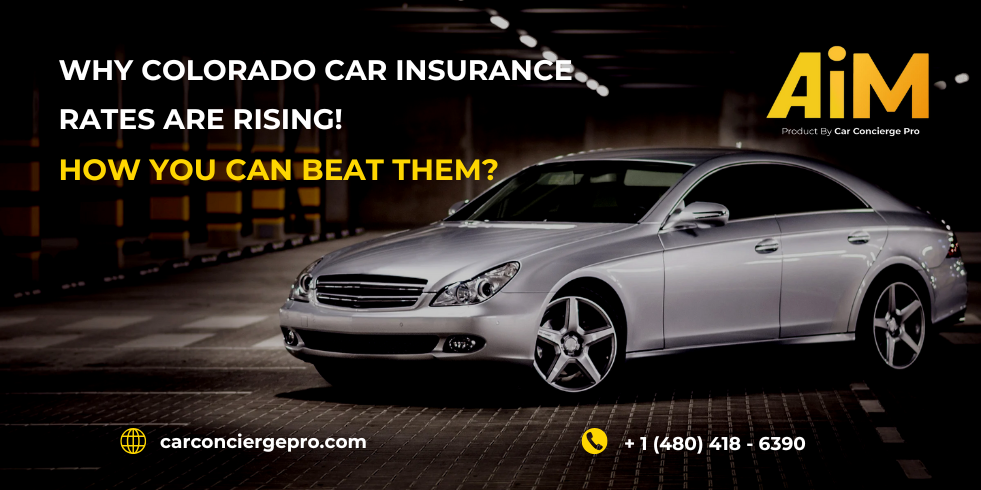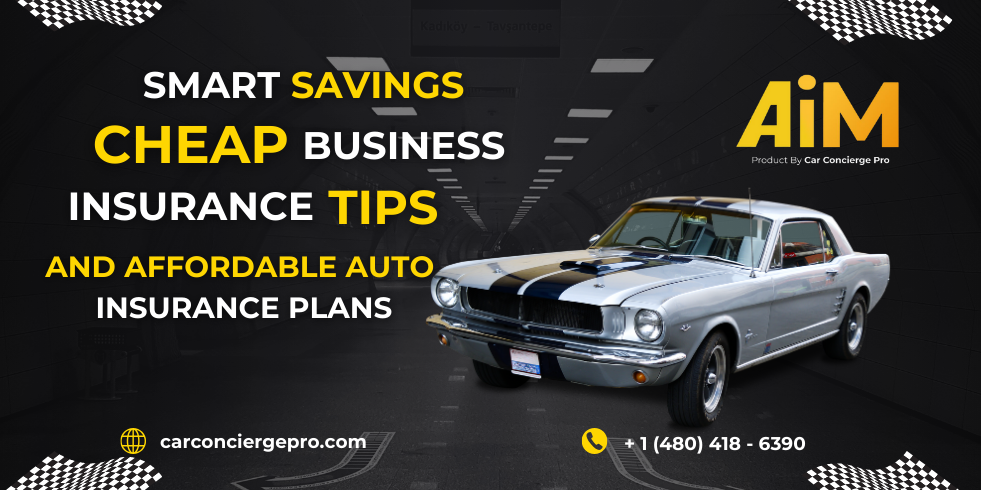When it comes to auto insurance, one of the most frequently asked questions is: “Is Car Insurance Full Coverage Worth It?” While full coverage provides comprehensive protection, it also comes with higher premiums. In this guide, we’ll dive deep into the benefits, costs, and top providers offering full coverage, helping you decide whether it’s the right choice for you. Along the way, we’ll also show how Car Concierge Pro and AiM (Auto Insurance Monitoring) services can streamline the process and save you money.
Table of Contents
What Does Car Insurance Full Coverage Mean?
Full coverage is a comprehensive insurance package that includes multiple components designed to provide financial protection in a wide variety of scenarios. While it is not a specific type of insurance policy, the term generally refers to a combination of coverages that go beyond the state-mandated minimum liability requirements. Full coverage typically includes:
Components of Full Coverage
- Liability Insurance:
- Covers damages or injuries you cause to other people or their property in an accident for which you are at fault.
- Nevada Requirement: Drivers must carry at least $25,000 per person and $50,000 per accident for bodily injury, and $20,000 for property damage.
- Collision Insurance:
- Pays for damage to your vehicle resulting from a collision, regardless of who is at fault.
- Key Statistic: The average cost of repairing a vehicle after a collision in the U.S. is approximately $4,000.
- Comprehensive Insurance:
- Covers non-collision incidents such as theft, vandalism, fire, or natural disasters.
- Important Insight: Nevada experiences a high rate of vehicle theft, with over 20,000 incidents reported annually according to FBI data.
Benefits of Car Insurance Full Coverage
Financial Protection
Full coverage provides a safety net for both your vehicle and liability expenses. For example:
- Theft Protection: If your car is stolen and not recovered, comprehensive insurance can reimburse you for its current market value.
- Accident Costs: Collision insurance ensures you don’t pay out-of-pocket for repairs or replacement after an accident.
Peace of Mind
Knowing that your vehicle is protected against a wide range of risks can reduce stress, especially in high-risk areas like Nevada. The state’s unique environment, including urban traffic congestion and extreme weather, makes comprehensive protection invaluable.
Lender Requirements
If you finance or lease your vehicle, your lender may require full coverage to protect their investment until the loan is paid off.
The Cost of Full Coverage
While full coverage provides extensive protection, it does come at a higher cost compared to minimum liability insurance. In Nevada:
- Average Annual Premium: The average premium for full coverage is approximately $1,802, compared to $924 for liability-only coverage.
- Factors Influencing Cost:
- Vehicle Value: Insuring a newer or high-value vehicle can increase premiums.
- Location: Urban areas like Las Vegas often see higher premiums due to traffic density and theft rates.
- Driving Record: A clean record can lower premiums by up to 30%.
Cost Comparison by Coverage Component
| Coverage Type | Average Annual Cost |
| Liability Only | $924 |
| Collision Insurance | $596 |
| Comprehensive | $282 |
How to Lower Full Coverage Costs
Although full coverage is more expensive, there are strategies to make it more affordable:
- Shop Around for Quotes:
- Insurance premiums can vary significantly between providers. Comparing rates could save you hundreds annually.
- Bundle Policies:
- Many insurers offer discounts of up to 25% if you bundle auto insurance with other policies, such as homeowners or renters insurance.
- Increase Your Deductible:
- Raising your deductible from $500 to $1,000 can reduce premiums by 10-20%.
- Leverage Discounts:
- Look for discounts such as:
- Good Driver Discount: Up to 30% savings.
- Low Mileage Discount: If you drive fewer than 7,500 miles annually, you may qualify.
- Multi-Vehicle Discount: Insuring multiple cars can reduce costs by 10-25%.
- Look for discounts such as:
- Maintain Good Credit:
- Drivers with excellent credit scores typically pay significantly lower premiums. In Nevada, the difference can be as much as $500 annually between excellent and poor credit.
- Install Safety Features:
- Anti-theft devices and advanced safety systems can qualify you for additional discounts.
How Much Does Full Coverage Cost?
Understanding the cost of full coverage auto insurance is essential for making informed financial decisions. Full coverage is more expensive than the minimum liability insurance required by law, but it offers significantly greater protection. Recent data from the Insurance Information Institute highlights the following trends and insights:
National Average Cost of Full Coverage
- Average Annual Premium: Full coverage costs an average of $1,771 per year in the United States. In contrast, the average cost for minimum liability insurance is just $635 per year.
State-by-State Variation
The cost of full coverage can vary dramatically depending on where you live:
- Michigan: Drivers in Michigan pay the highest average premium at $2,890 per year. This is due to the state’s unique no-fault insurance system and unlimited personal injury protection requirements.
- Maine: At the other end of the spectrum, drivers in Maine pay an average of just $876 per year. Factors contributing to Maine’s low rates include minimal traffic congestion, low population density, and fewer claims.
- Nevada: In Nevada, full coverage averages $1,802 annually, influenced by factors like high vehicle theft rates, urban congestion, and a large influx of tourists.
Age as a Cost Factor
Age is one of the most significant factors affecting the cost of full coverage:
- Young Drivers: Drivers under the age of 25 can expect to pay up to $4,000 annually due to their higher risk profile.
- Older Drivers: Drivers aged 40 and above with clean records typically pay around $1,400 per year, a more manageable cost.
Additional Factors Influencing Cost
Several other variables can impact the cost of full coverage:
- Vehicle Type: Luxury or high-performance vehicles typically incur higher premiums due to their expensive repair costs and higher likelihood of theft.
- Driving Record: A history of accidents or traffic violations can increase premiums by 20-50%.
- Credit Score: In most states, insurance companies use credit scores as a risk indicator. Drivers with poor credit may pay up to $1,500 more annually than those with excellent credit.
- Mileage: Low-mileage drivers (under 7,500 miles annually) often qualify for discounts, reducing their premiums by 5-15%.
Strategies to Reduce Full Coverage Costs
While full coverage offers comprehensive protection, there are ways to make it more affordable:
- Comparison Shopping:
- Insurance rates can vary significantly between providers. Studies show that drivers who compare quotes can save an average of $500 annually.
- Bundling Policies:
- Combining auto insurance with home or renters insurance can result in discounts of up to 25%.
- Increasing Your Deductible:
- Raising your deductible from $500 to $1,000 can reduce your premium by 10-20%, though it increases your out-of-pocket expenses in the event of a claim.
- Utilizing Discounts:
- Many insurers offer discounts for:
- Safe Driving: Up to 30% for maintaining a clean driving record.
- Good Grades: Young drivers with a GPA of 3.0 or higher can save 10-20%.
- Safety Features: Vehicles equipped with anti-lock brakes, airbags, and anti-theft systems often qualify for additional discounts.
- Many insurers offer discounts for:
- Maintaining a Good Credit Score:
- Drivers with excellent credit scores pay significantly less. In Nevada, for instance, the difference between excellent and poor credit can amount to $500 annually.
- Taking a Defensive Driving Course:
- Completing a state-approved defensive driving course can lower premiums by 5-10%.
The Value of Full Coverage
Despite its higher cost, full coverage provides significant value, particularly for drivers with new or high-value vehicles. It ensures financial protection in various scenarios, including:
- Accidents: Collision coverage pays for repairs regardless of fault.
- Theft or Vandalism: Comprehensive insurance reimburses you for the market value of your car if it’s stolen or irreparably damaged.
- Natural Disasters: Full coverage protects against damage from events like floods, hail, or wildfires.
Nevada-Specific Considerations
For drivers in Nevada, full coverage is often a worthwhile investment due to the state’s unique challenges:
- High Vehicle Theft Rates: With over 20,000 thefts reported annually, comprehensive coverage is essential.
- Tourist Traffic: Nevada attracts nearly 40 million visitors annually, leading to congested roads and a higher likelihood of accidents.
- Extreme Weather: Flash floods and intense heat can cause significant vehicle damage, making comprehensive insurance a smart choice.
When to Opt for Liability-Only Coverage
In some cases, liability-only insurance may be sufficient:
- Older Vehicles: If your car is worth less than $5,000, the cost of full coverage may outweigh its benefits.
- Low-Risk Drivers: Those with clean records and low annual mileage might find liability-only coverage adequate.
Investing in full coverage auto insurance provides financial security and robust protection against various risks. While it is more expensive than minimum liability coverage, the additional benefits often justify the cost, especially for drivers in high-risk areas like Nevada.
Is Full Coverage Worth It for Your Vehicle?
To determine if full coverage is worth it, consider these factors:
1. Vehicle Value
If your car is worth less than $4,000, it might not make sense to pay for full coverage. Instead, liability-only insurance could suffice.
2. Loan or Lease Requirements
If you’re financing or leasing your vehicle, most lenders require full coverage to protect their investment.
3. Risk Factors
Drivers in high-risk areas with higher accident or theft rates benefit more from full coverage. For instance, urban areas like Las Vegas, New York, and Miami have elevated risks.
4. Financial Cushion
If you can afford to repair or replace your vehicle out of pocket, you might opt for lower coverage. However, full coverage offers peace of mind and prevents unexpected financial strain.
Top Providers for Full Coverage Auto Insurance
Choosing the right provider can make a significant difference in both cost and service quality. Here’s a data-driven comparison of top insurers:
1. Geico
- Average annual premium: $1,268.
- Best for: Affordable rates and discounts for good drivers, military members, and federal employees.
- Unique features: Easy-to-use mobile app and robust customer service.
2. State Farm
- Average annual premium: $1,381.
- Best for: Drivers seeking personalized service through local agents.
- Unique features: Steer Clear program for young drivers and Drive Safe & Save discounts.
3. Progressive
- Average annual premium: $1,509.
- Best for: Customizable policies and coverage for high-risk drivers.
- Unique features: Snapshot program that rewards safe driving habits.
4. Allstate
- Average annual premium: $1,920.
- Best for: Comprehensive policy options and accident forgiveness.
- Unique features: Drivewise app for monitoring and improving driving habits.
5. USAA
- Average annual premium: $1,225.
- Best for: Military families.
- Unique features: Exceptional customer satisfaction and low rates for eligible members.
How to Save on Full Coverage Auto Insurance
Auto insurance is a significant expense, especially for drivers opting for full coverage. However, there are numerous strategies to reduce premiums without compromising on protection. Here are some of the most effective methods:
1. Shop Around
One of the most straightforward ways to save on full coverage auto insurance is by shopping around. Rates can vary significantly between insurers due to differences in how they assess risk.
- Potential Savings: Comparing quotes can save drivers up to $500 annually.
- Data Insight: A 2023 study by ValuePenguin found that some drivers could save as much as $1,200 per year by switching to a lower-cost provider.
- Tools to Use: Utilize comparison tools like AiM’s insurance services to gather and evaluate multiple quotes effortlessly.
2. Bundle Policies
Many insurance providers offer discounts when you combine multiple types of coverage, such as auto and home insurance.
- Discount Rates: Bundling can save up to 25% on premiums.
- Example: A driver paying $1,800 annually for auto insurance and $1,200 for homeowners insurance could save $750 a year by bundling both policies.
- Why It Works: Insurers reward loyalty and consolidated accounts by offering lower rates.
3. Maintain a Clean Record
Your driving history is one of the most significant factors influencing your premium. Avoiding accidents and traffic violations is key to securing lower rates.
- Savings Potential: Drivers with a clean record save up to 40% compared to those with at-fault accidents or violations.
- Data Insight: According to the Insurance Information Institute (III), a single speeding ticket can increase premiums by 18%, while an at-fault accident may hike rates by 40%.
- Pro Tip: Consider using telematics programs, which monitor driving habits and offer discounts for safe behaviors.
4. Adjust Your Deductible
The deductible is the amount you agree to pay out of pocket before your insurance kicks in. Raising your deductible can lead to significant savings.
- Savings Estimate: Increasing your deductible from $500 to $1,000 can lower premiums by 10-20%.
- Example: A driver paying $1,800 annually could save $180-$360 by opting for a higher deductible.
- Important Consideration: Ensure you have enough savings to cover the deductible in case of an accident.
5. Leverage Discounts
Insurance companies offer a variety of discounts that can help reduce premiums. Be proactive in asking about these options:
Good Student Discounts
- Eligibility: Available to young drivers maintaining a GPA of 3.0 or higher.
- Savings: Up to 15% off premiums.
Low Mileage Discounts
- Criteria: For drivers traveling fewer than 7,500 miles annually.
- Savings: 5-10%, depending on the insurer.
- Tip: If you work remotely or have a short commute, inform your provider.
Multi-Car Discounts
- Benefit: Insuring multiple vehicles under one policy can save up to 20%.
- Example: A family with three cars insured for $4,500 annually could save $900 by combining policies.
Vehicle Safety Features
- Eligibility: Cars equipped with anti-lock brakes, airbags, and anti-theft systems.
- Savings: 5-15% depending on the features.
Defensive Driving Courses
- Eligibility: Drivers who complete a state-approved defensive driving course.
- Savings: 5-10%, with some insurers offering one-time discounts of up to $150.
6. Maintain a Good Credit Score
In most states, your credit score can impact your auto insurance rates. Insurers view good credit as an indicator of responsibility.
- Savings Insight: Drivers with excellent credit pay $1,500 less annually on average than those with poor credit.
- State Exceptions: California, Hawaii, and Massachusetts prohibit the use of credit scores in determining premiums.
- Tips for Improvement: Pay bills on time, reduce outstanding debts, and check your credit report regularly.
7. Consider Usage-Based Insurance
Usage-based insurance (UBI) programs monitor your driving habits via a mobile app or plug-in device. Safe drivers can earn substantial discounts.
- Savings Potential: Discounts range from 5-30%.
- Features Monitored: Speed, braking patterns, and mileage.
- Popular Programs: Progressive’s Snapshot and Allstate’s Drivewise.
8. Opt for Pay-Per-Mile Insurance
Pay-per-mile insurance is ideal for low-mileage drivers who want to save on premiums.
- Cost Insight: Drivers averaging 5,000 miles annually could pay $500 less per year compared to traditional policies.
- Major Providers: Companies like Metromile specialize in pay-per-mile insurance.
9. Regularly Review Your Coverage
Life changes such as moving, changing jobs, or paying off your vehicle can impact your insurance needs.
- Pro Tip: Review your policy annually to ensure it aligns with your current circumstances.
- Example: A driver who moves from an urban area to a rural one could save $200-$300 annually.
10. Evaluate Full Coverage vs. Liability-Only Coverage
If your vehicle is older or has a low market value, full coverage may not be cost-effective.
- Break-Even Point: If your car is worth less than 10 times the annual premium, liability-only coverage may be sufficient.
- Example: A 10-year-old car valued at $3,500 might only require liability insurance, saving the owner $1,000 annually.
Reducing the cost of full coverage auto insurance requires a combination of smart shopping, leveraging discounts, and tailoring coverage to your needs. By implementing these strategies, drivers can save hundreds or even thousands of dollars annually while maintaining the protection they need. Take the time to compare options, ask about discounts, and adjust your policy to ensure you’re getting the best value.
How AiM Services Enhance Your Experience
AiM services make finding full coverage easier than ever:
- Real-Time Comparisons: Instantly compare policies from dozens of providers.
- Tailored Insights: Get customized recommendations based on your unique profile.
- Smart Alerts: Receive updates on new discounts and rate changes.
Together, Car Concierge Pro and AiM services offer a seamless experience, ensuring you get the most value for your insurance dollars.
FAQs About Full Coverage Auto Insurance
Do I need full coverage if my car is paid off?
It depends on your vehicle’s value and financial situation. If the car is older and inexpensive to replace, liability-only coverage might suffice.
What happens if I don’t have full coverage and my car is totaled?
Without full coverage, you’ll be responsible for all repair or replacement costs.
How do providers determine full coverage premiums?
Insurers consider factors like your driving record, credit score, vehicle type, location, and coverage limits.
Conclusion
Deciding whether full coverage is worth it comes down to your personal circumstances. While it offers unmatched peace of mind and comprehensive protection, the costs can add up. By evaluating your needs, comparing providers, and leveraging tools like Car Concierge Pro and AiM services, you can make an informed decision and save money.
For more insights into optimizing your insurance coverage, reach out to Car Concierge Pro or try AiM (Auto Insurance Monitoring) today.



